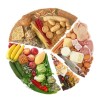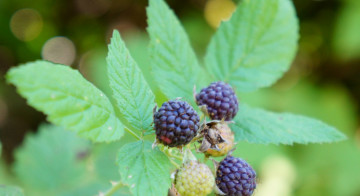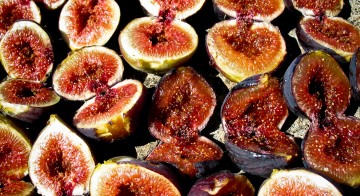
Backpacking is a calorie-intensive activity. Eating enough and eating the right foods is essential to having enough energy to enjoy your trip. Commercially freeze-dried backpacking foods can be convenient, but DIY backpacking meals can often taste better and will save you money.
When you’re eating great food, it’s hard to feel anything other than happiness and satisfaction. Great food is the best medicine I have found for aches, pains and bad attitudes on the trail. It is with food that I lift the spirits of myself and my friends. The only thing better than backpacking is backpacking with amazing food.
Being hungry can make the mental focus of backpacking more on physical hardship rather than the adventure at hand.
I always pack a few extra chocolate bars for addressing low stamina and exercise-induced mental stress on the trail. Brains run on sugar and fat, and when exercising all day, it’s okay to eat higher-calorie foods that you’d avoid at home. That being said, good chocolate remains one of my most reliable approaches to improving the moods of myself and those around me on tough days.
Most people use between 400 to 600 calories an hour while backpacking.
That means even an average sized hiker hiking for 10 hours a day could use as many as 6000 calories a day (don’t forget, camp chores and even sleeping requires energy!). If you’re just getting into backpacking, I advise measuring how much energy you actually need on a typical day rather than making a guess before a long backpacking trip.
If you need to know how much you tend to eat daily on a long backpacking trip, you can take a shorter trip and pay attention to how much you need. For a large adult on a challenging backpacking trip, up to 6000 calories per day is a good target to start with as it will likely be more than you need, and it only hurts a little to have extra food on a short trip. You’ll likely find your caloric needs will be somewhat lower. Smaller people may pack much less — around 3500 calories per person per day works well for me and my hiking partner (plus a little extra in case of an emergency).
The ideal daily caloric intake is one where you don’t gain or lose any weight over the course of your backpacking trip.
So how much food do you need on a backpacking trip?
In order to determine how much food you need for a long trip, go on a three or four day trip with more food than you imagine needing. Eat as much as you as you feel inclined, and then make a list of how much you eat — particularly after the second day. On the first few days of the hike, your body is more likely to be burning stores of glycogen in the liver and muscles, your body’s “backup batteries,” which may decrease your perceived level of hunger.
By the third day of a hiking trip, your appetite and metabolism have had time to use up excess glycogen stores and adjust to the efforts of backpacking, and more accurately reflect the number of calories your body is using on the trail than during the first two days.
The amount of food you need daily AFTER several days on the trail should be a good ballpark estimate of the amount of food you’ll want on an average day backpacking on a longer trip.
Best foods for backpacking
Nutritionally dense, non-perishable foods like nuts, granola, powdered milk, oatmeal, dehydrated fruits, vegetables and beans, beef jerky, crackers, salami, dehydrated soups and sauces, pasta, instant rice and chocolate are all excellent trail foods because they are lightweight, simple to prepare, and won’t spoil on your trip.
Beverages like coffee, tea, powdered drink mixes and hot chocolate are lightweight luxuries that are great to have along.
Treats like Pop Tarts, and Fig Newtons in your food caches keep things interesting and add calories (a good thing!).
If you plan to do much backpacking and enjoy having hot dinners, a food dehydrator is well worth the investment.
Freeze-dried meals at camping stores are expensive and for folks with culinary inclinations, they can be downright abusive to the palate. I make delicious meals for a fraction of the cost using ingredients prepped in a food dehydrator.
Some dried foods like apples, raisins and onion flakes can be bought cheaply at the grocery store. Others, like apricots and cranberries taste better store-bought, but many, like pineapples and carrots are easily and inexpensively dehydrated at home. In addition to milk chocolate, home-dried pineapple is my favorite trail food —it is sweet and chewy and makes my mouth water just thinking about it.
Backpacking meal ideas
Backpacking Breakfasts
Hiking in the mountains is often chilly in the morning, but once you start hiking you warm up quickly. Many seasoned hikers prefer a fast breakfast that doesn’t require a lot of cooking, clean up, and time spent shivering around the camp.
Fast backpacking breakfasts
- Granola with powdered milk
- Peanut butter, almond butter or Nutella on Crackers
- Pop Tarts
- Coffee
- Hot Chocolate
Breakfasts for slower mornings
- Oatmeal with powdered milk, cinnamon, and raisins.
- Veggie Scramble (see recipe below)
Backpacking lunches
Instead of eating lunch proper, we keep our energy up by snacking throughout the day on high energy foods. If you bring a variety of nuts and fruits you can pick out a few to eat each day – that way you won’t get bored eating the same trail mix every day.
Favorite items for snacking on the trail
- Dried fruit
- Pineapple
- Apples
- Raisins
- Apricots
- Cranberries
- Prunes
- Dates
- Nuts
- Almonds
- Peanuts
- Cashews
- Pistachios
- Walnuts
- Chocolate Bars
- Granola Bars
- Beef Jerky
Favorite foods for sit-down lunches
- Packaged fish and crackers (salmon and tuna both come in lightweight packets)
- Salami and Crackers
- Peanut butter or almond butter on crackers
Backpacking dinners
These dehydrated cooked meals are well worth the effort:
- Pesto Pasta with Spinach (see recipe below)
- Couscous Curry (see recipe below)
- Vegetarian Chili (see recipe below)
If you don’t want to cook, the sit-down lunch foods above make fine dinners.
Backpacking desserts
- Candy
- Granola Bars
- Nutella on crackers
- Hot Chocolate
Recommended backpacking cookbooks
Recipes for Adventure is a top-notch cookbook with thorough but simple instructions for every step from dehydrating to preparing the final meal in the backcountry. If I were going to rely on a single cookbook for learning the art of backcountry cooking, this would be the one. It is an outstanding resource.
Lipsmackin’ Backpackin’ has been around a bit longer and offers a wide variety of battle-tested recipes gathered from years of thru-hiking experience on the PCT. If you’re comfortable with dehydrating foods and are looking for inspiration for new trail food ideas, this is a great source.
A few backpacking recipes:
Here are a few of my go-to backpacking recipes. I advise trying recipes out at home first – that way you can make sure you can prepare them easily and that you like the way they taste before you’re on the trail and committed to eating them.
Veggie Scramble
Pesto Pasta with Spinich
Couscous Curry
Vegetarian Chili




